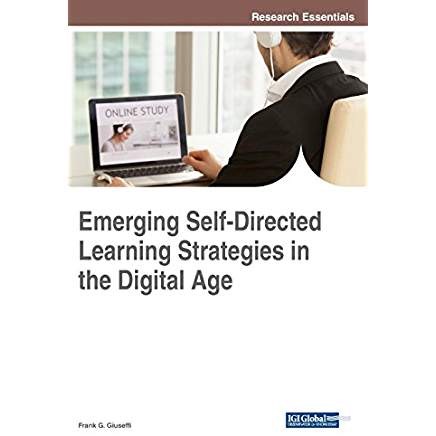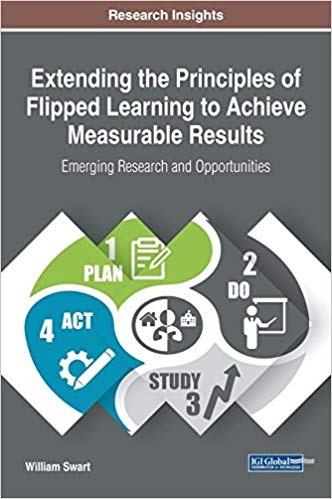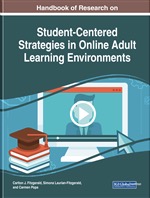student learning
Select an item by clicking its checkbox
It isn’t over. “It,” of course, is the Covid-19 crisis that has moved students, faculty and staff off our physical campuses, moved learning to online platforms, and disrupted the normal rhythms of an academic year. What is certain right now is what is not happening: honors ceremonies, graduations, conferences ...
When we suddenly made the transition online, I wanted to try to maintain as much normalcy for my students (and myself) as possible. I teach a small, honors section of our introductory Religions of the World course. There are only 11 students enrolled this semester—a real luxury. I thought we ...
Date Reviewed: April 15, 2020
Emerging Self-Directed Learning Strategies in the Digital Age (2018) edited by Frank Giuseffi is one of the volumes among the Advances in Educational Technologies and Instructional Design Book Series. In the preface, Giuseffi acknowledges that self-directed learning (SDL) is not a new concept. Yet, twenty-first century technology continues to transform the platforms of SDL. His desire is to highlight the importance of self-directed learning in today’s teaching-learning environment. With each chapter written by a different scholar (or group of scholars), the reader is exposed to a number of strategies useful among multiple teaching-learning platforms to foster self-directed learning with the desired outcome of promoting student success and greater teacher–student engagement.
The text is organized into eight chapters, with each chapter addressing a specific SDL platform or process. Included among the topics: online learning, an android-based mobile application for students to monitor their performance via grade point average, Massive Open Online Courses and their applicability to technical and vocational education and training in developing countries, non-mandatory employee training, the necessity of self-motivation among doctoral students to complete their dissertation (built upon Malcolm Knowles’s andragogical assumptions), cultural influences on self-directed language learning, the relationship between metacognition and knowledge transfer along with critical thinking and SDL, and teachers’ use of digitally based SDL strategies to employ essential questions to nurture the students’ critical thinking skills. While the editor’s goal may have been to provide a wide range of scenarios for the engagement of self-directed learning, chapter 4, addressing employee training and the organization’s responsibility for offering the training, seemed out of place. Job training is not germane to the discussion of SDL in the academic setting or specific teaching-learning platform or process.
All eight chapters in the text are well researched, referencing pertinent studies and pedagogical principles. Two of the chapters share specific research conducted on the phenomenon addressed. Chapter 5 (“The Intersection of Andragogy and Dissertation Writing”) outlines the mixed methods study conducted by a doctoral student exploring the dissertation completion process. Dissertation chairs and doctoral students in the dissertation-writing phase will find this chapter insightful. Chapter 8 (“Transformational Shifts of Pedagogy Through Professional Development, Essential Questions, and Self-Directed Learning”) describes a year-long case study of professional development among teachers and their use of digital technology in designing essential questions targeting critical thinking among students. Though the emphasis of the research was on the subjects of math and reading, the reader will gain information on how to use questions to help develop critical thinking skills among students.
The layout of the book lends itself to use as a reference guide. Each chapter begins with an abstract succinctly stating the purpose of the chapter and relevance to SDL. The chapters end with a concluding paragraph reiterating the thesis and main tenets shared. Finally, you will find a list of pertinent references for further study. Our goal as educators is to help our students become self-directed learners. This text will broaden your understanding of how to use today’s technology to help in this quest.
Date Reviewed: April 15, 2020
As higher education continues to grapple with expanding online coursework in meaningful ways, faculty must confront a perennial question: how can online coursework mirror the rigor of in-person classes while preserving the flexibility that makes online learning attractive to students? In Extending the Principles of Flipped Learning to Achieve Measurable Results: Emerging Research and Opportunities, William Swart argues that flipped learning has the potential to balance these demands by winnowing the transactional distance, a barrier to student engagement, that is common in traditional coursework.
In traditional learning, a lecture typically occurs in class and homework extends beyond the classroom; conversely, flipped learning requires students to study course material at home, including recorded lectures, before engaging in collaborative, problem-solving activities in class. By flipping the traditional model of higher education, flipped learning allows students to invest more deeply in their coursework while simultaneously receiving feedback and peer support in class.
While flipped learning may be alluring, enacting such a dramatic reordering requires resources, knowledge, and tools that most faculty do not possess. Written in a straightforward, practical style, Swart’s text provides a viable throughway for faculty members hoping to enact a flipped classroom.
Swart begins his exploration of the concept by reviewing the proliferation of online coursework and noting the near-universal agreement among university faculty regarding the disparity of quality in online learning versus face-to-face learning. As an antidote to this pattern, Swart touts the considerable benefits that flipped learning affords students, instructors, and college administrators. Following this introductory material, the text grounds the Plan-Do-Study-Act (P-D-S-A) cycle as the primary vehicle for introducing, executing, and maintaining a flipped classroom. This cycle, originating from business and management, ensures that meaningful learning occurs throughout a new intervention, rather than relying solely on outcome data to judge the effectiveness of an intervention.
The heart of the text unpacks each step of the PDSA cycle and its use in a flipped classroom, offering practical advice and data to support those wishing to use the flipped model. This occurs through direct discussion of the model and an embedded case study that illustrates core concepts. Before closing with an exploration of possible future research, Swart also includes candid discussion of the challenges—both anticipated and unanticipated—that flipped learning often produces. As Swart notes, while there is positive evidence regarding student preferences, achievement, and satisfaction concerning flipped learning, there is a paucity of research documenting its role in promoting other desirable values in students.
This text adds to a growing body of research explicating the promise of flipped learning within K-12 and higher education. Particularly for faculty members in theological education or religious studies in a liberal arts setting, this text provides short-term and lasting benefits. Swart’s thorough unpacking of flipped learning delivers a robust catalog of research-based, practical advice for enacting this model. Perhaps most valuable for these faculty is the opportunity for students to engage with weighty ideas in a collaborative manner after having initial, independent preparation.
Date Reviewed: April 15, 2020
Adult learners are different than younger learners. These groups do, however, share some interests and learning similarities; for instance, both are motivated to use technology in learning. Yet adult learners often have additional challenges using technology because of their late involvement with the digital world. Older adult learners’ participation in online learning and continuing education pose institutional, situational, and dispositional challenges.
Online learning provides particular possibilities for adult learners, thereby allowing them to cope with specific adult learning demands. It helps adult students to maintain some sustainability while navigating new technological terrains. Adult learners may have particular learning issues and challenges arise from time to time.
The Handbook of Research on Student-Centered Strategies in Online Adult Learning Environments was developed for educators who work with adult learners in online programs. It is a book primarily focused on helping teachers by offering specific ideas for working with students in online environments and serving as a guide for structuring learning experiences for people at different stages of development.
The book comprises 22 chapters organized in four sections. Section 1, “Integrating Educational Practices into Online Learning,” provides insights into how educators can link natural learning tendencies in teaching to students’ learning. Furthermore, it highlights competency-based education and the position of student-centered online learning. Section 2, “Adult Learners and Learning,” discusses andragogy in relation to the transitions in knowledge acquisition, focusing on concepts of digital natives and digital immigrants. Discourse on preparing the efficient teacher in the age of information and communication technology is foregrounded in Section 3, “Professional Learning.” For instance, Chapter 14, “A Guide to Professional Learning for Secondary Mathematics Teachers,” explores the impact of a professional learning program on mathematics teachers’ self-efficacy. Section 4, “Student-Centeredness and Collaboration,” provides an overview of collaborative learning as well as student-centered online learning.
This handbook also provides arguments on converting theoretical frameworks into practical work in an online classroom or any other digital context. The chapters are organized subsequently in a rational order, yet the reader can start with any chapter of potential interest. However, the discourse on neoliberalism, along with austerity, and their impact—on online education generally, and online adult education particularly—is absent. Furthermore, the counter-argument which debates that online learning should be accepted with much caution receives only 15 pages. Moreover, while Dan Patroc argues that insufficient non-verbal communication is a major drawback in online learning, non-verbal communication receives only one paragraph. Overall, the editors and authors provide a remarkable contribution to the literature on online adult education. Handbook of Research on Student-Centered Strategies in Online Adult Learning Environments is highly recommended for adult educators, online trainers, researchers, and policymakers.




